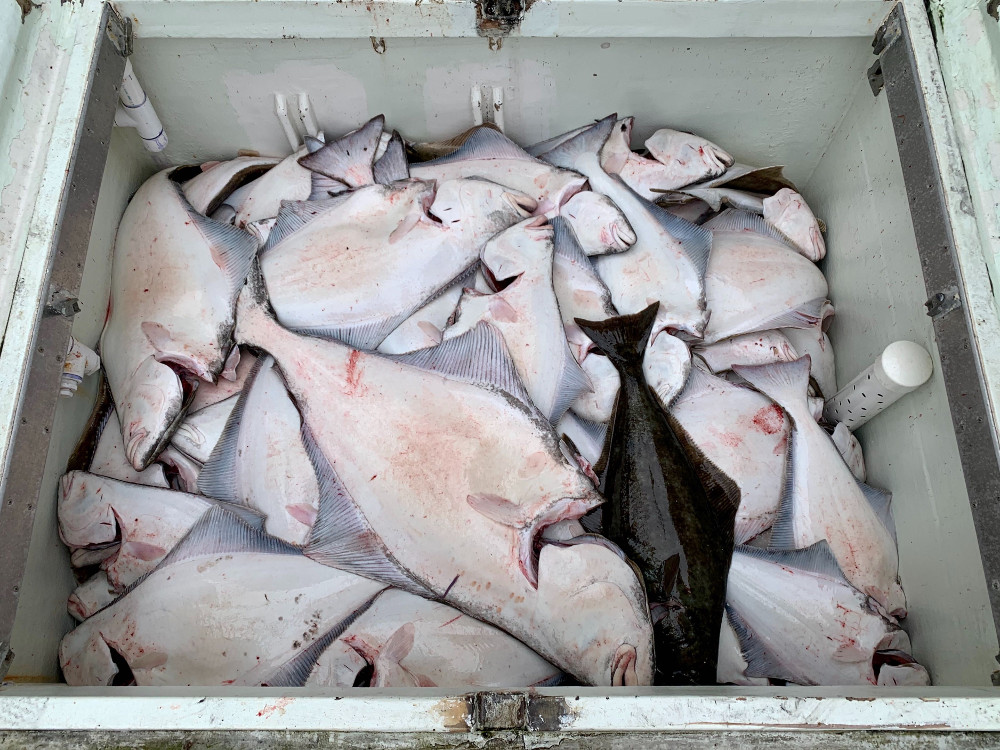
A joint U.S. and Canadian commission that regulates halibut voted last week to boost this year’s fishing limits for the valuable bottomfish.
The International Pacific Halibut Commission held its annual meeting virtually January 24th through the 28th. It sets the overall combined annual limits for commercial, sport and subsistence fisheries stretching from Alaska to California.
The commission approved this year’s total coast-wide limit at 41.22 million pounds, more than a five percent increase from last year.
Commission scientist Ian Stewart reported on some more encouraging signs from halibut surveys and fishing.
“I’d like to start with some good news which is that we saw indices up in 2021, with younger fish, particularly the 2012 year class moving into the stock,” Stewart told the commission.
Scientists estimate that stocks have been declining for the past five years. But Stewart said fish born in 2012 could stop that trend. He also noted for the past two years that fisheries on most parts of the coast have fallen short of catch limits.
“The end result is that we’ve experienced less fishing on the stock for the last two years than we would have seen anytime over nearly the last decade,” he said.
Over the past century, annual catches along the coast have ranged from a low of 34 million pounds to a high of around 100 million pounds. The last two years have seen total landings near the bottom of that range. Those numbers include the catches from fisheries targeting halibut along with the bycatch from other fisheries.
The increase approved for this year doesn’t apply to all parts of the coast equally. For Southeast Alaska, area 2C, it will mean a hike of closer to two percent, and it’s nearly four percent for area 3A, or the central Gulf of Alaska. Area 2B, the coast of British Columbia, sees an overall increase of around 8 percent. Area 3B in the western Gulf of Alaska sees a 25 percent increase.
The combined limit for all fisheries in Southeast area 2C goes up by 110,000 pounds from last year. It’s set at 5.91 million this year and was 5.8 million last year. The combined limit in the central gulf increases 550,000 pounds. It’s 14.55 million in 2022, and was 14 million last year.
The commission also approved management measures for charter fishing in Southeast and the central gulf. In Southeast those will mean a continued one-fish bag limit but the size limit is more restrictive. That fish has to be 40 inches or under, or bigger than 80 inches. Both guided and unguided recreational fisheries exceeded harvest limits in Southeast last year.
Like last year the commercial fishing season for halibut this year along much of the coast will be March 6th through December 7th. The halibut commission will be marking its 100th year in 2024.









